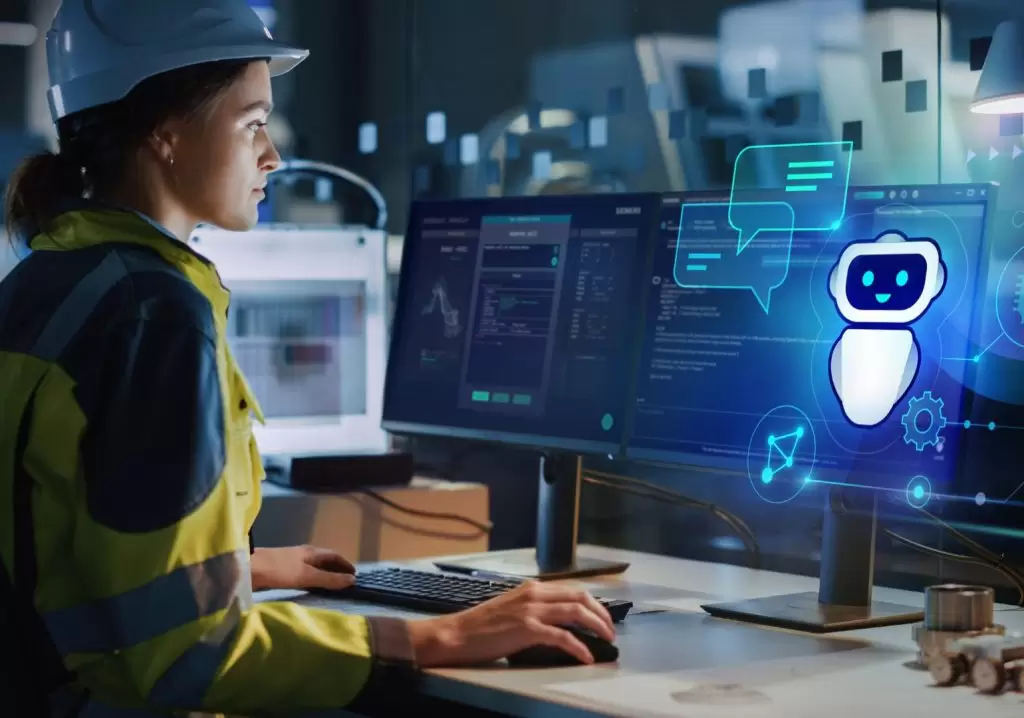Industrial artificial intelligence could position Australia as a global leader in sustainable innovation. Through its Beyond 1% program, leading technology company Siemens is helping to accelerate digitalisation across buildings and infrastructure, energy and industry sectors, and believes that this will lead to Australia having a bigger impact on decarbonising the world.
Artificial intelligence (AI) can provide new pathways to go beyond Australia’s net zero target, by positioning the nation as a global leader in sustainable innovation.

Australia currently contributes about one per cent to global emissions. While this may seem small, it is a significant global contribution. The Beyond 1% approach could see Australian technology and expertise contributing to global emissions reductions, whilst strengthening our local businesses and the economy.
The rapid deployment of digitalisation and AI across buildings, infrastructure, energy and industry sectors could be the key to Australia not only meeting its 2030 targets but also delivering innovation to help global decarbonisation.
A study published in Nature Communications reveals that AI could positively impact 79 per cent of the targets defined by the UN Sustainable Development Goals. These included better societal outcomes in supporting circular economies, renewable energy grids, better economic outcomes and growth, and improved modelling of climate scenarios.
Peter Halliday, CEO of Siemens Australia and New Zealand, reinforces the critical role AI is playing in decarbonisation. “Industrial AI is part of the digitalisation equation that will accelerate innovation and outcomes that lead to critical problem-solving, such as decarbonising the world from Australia beyond the one per cent of emissions we are responsible for,” he said.
“Our goal is to empower industries with the tools they need to not only meet but exceed their sustainability targets.”
Beyond 1%: Global and local partnerships drive innovation
Siemens is supporting this ambition through strategic partnerships to accelerate the development and deployment of AI technologies. The company is collaborating with Global AI computing group NVIDIA to develop an “industrial metaverse” that combines Siemens’ Xcelerator platform with NVIDIA’s Omniverse.
This partnership aims to revolutionise how products and experiences are designed, manufactured and serviced, allowing customers to use virtual products as they would in reality.
The Siemens Industrial Copilot is another innovation that has been developed in collaboration with Microsoft. The AI-powered assistant can be integrated into new products to give software engineers a virtual colleague with which to discuss ideas and find solutions.
The company is also forging local partnerships to progress AI innovation in Australia. “Our local partnerships with industry, government and academia are as important as our technological prowess and have enabled us to grow in Australia over the past 150 years,” Halliday said.
These include collaborating with Automation Innovation, a Melbourne-based company, to develop an AI-driven laser cleaning process for glass bottle moulds, where the potential through raw material savings alone is to decarbonise glass bottling globally by more than one billion kg of carbon dioxide each year.
BlueScope Steel is using Siemens’ Senseye Predictive Maintenance software, the leading cloud-based and AI-powered solution for predictive maintenance, which can reduce costs by as much as 40 per cent and reduce unplanned machine downtime by up to 50 per cent. Siemens has also partnered with Swinburne University of Technology, developing guidelines for responsible AI use in the energy sector.
Potential AI applications to curb carbon emissions
Digitalisation is the key to unlocking significant emissions reductions across all sectors of our economy, Halliday believes. “By leveraging technologies like Industrial AI, we can optimise processes, reduce waste and drive efficiencies that directly contribute to our sustainability goals.”
PwC predicts that AI could contribute up to $15.7 trillion to the global economy by 2030. Failing to adopt AI carries a heavy cost. The Kingston AI Group’s Australia’s AI Imperative report estimates failing to introduce AI systems to world standards in key industries could cost Australia $35.7 billion in GDP a year.
In a recent panel discussion at the national Beyond 1% Summit hosted by Siemens in Sydney, industry leaders explored how industrial AI is reshaping industry sectors and driving better sustainability performance.
Hanno Blankenstein, co-founder and CEO of Unleash Live, highlighted how an AI-powered computer vision could transform traffic management and emissions reduction of the Sydney Harbour Bridge.
In the energy sector, AI is enabling more efficient grid management and predictive maintenance. “The algorithms involved today can tell utilities and operators exactly what the consumption patterns are,” said Jose Moreira, General Manager of Grid Software at Siemens Australia & New Zealand. “This allows for better management of the grid, prevention of blackouts, and more efficient use of generated electricity.”
Walter Meyler, CEO of Automation Innovation, spoke about how AI is automating complex tasks in industrial settings. “We’ve developed an AI system that can analyse a 3D scan of any mould and automatically generate a cleaning program for a robot,” he said. “This not only saves time but also allows for greater flexibility and efficiency in manufacturing processes.”
However, challenges remain. Dr Jill Freyne, former Deputy Chief Scientist at CSIRO, who moderated the panel discussion, highlighted the need for a workforce equipped with the skills to develop these innovations.
“We need to attract diverse talent to the field of Industrial AI,” she said. “This includes encouraging more women to enter engineering roles and framing AI work in terms of its impact on sustainability, which could appeal to a broader range of candidates.”
How can digitalisation help Australia punch above its weight in the global net zero race? Learn more about Beyond 1%.

